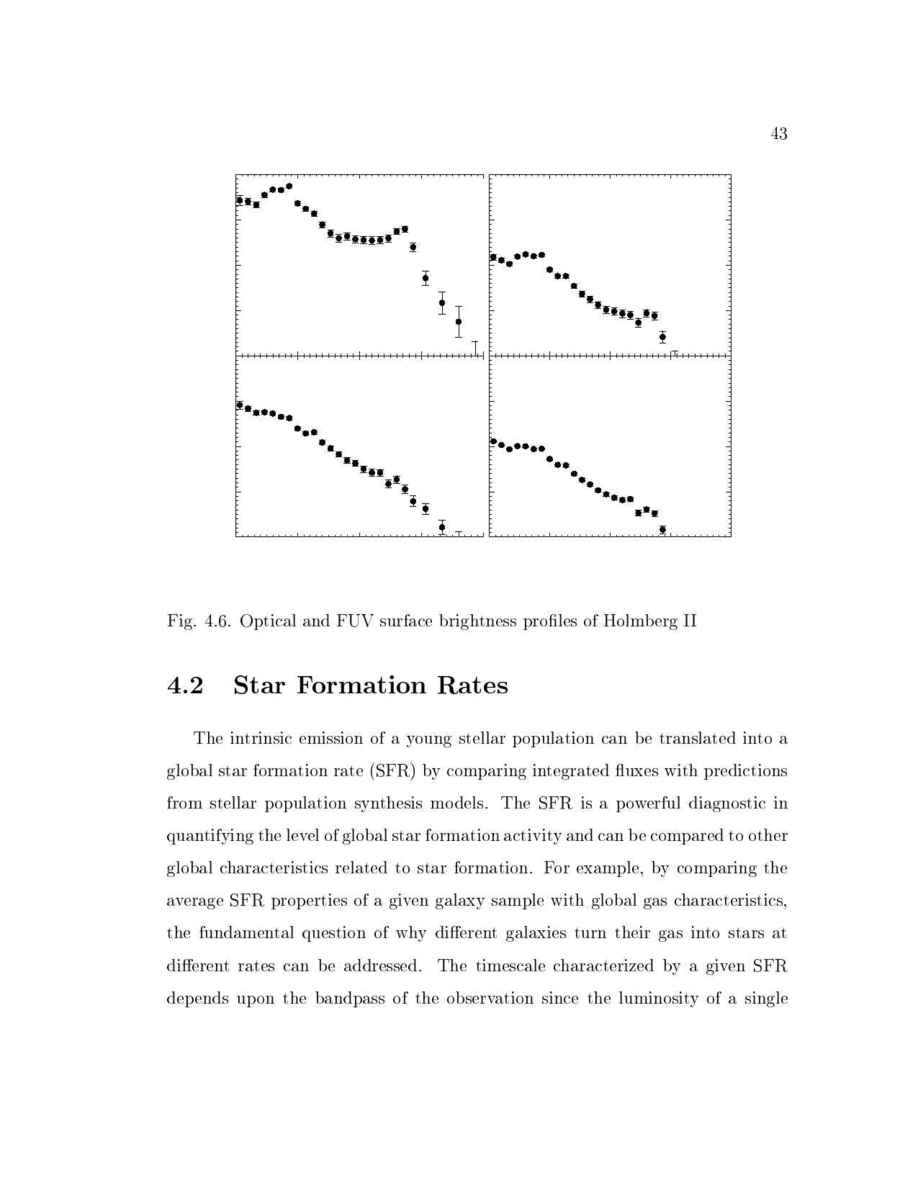Astronomical Applications Department, U.S. Naval Observatory thesis Page 57

43
24
23
22
21
FUV
U
1
2
3
4
B
1
2
3
4
25
24
23
22
R
µ
(mag arcsec
-2
)
Radius (arcminutes)
Fig. 4.6. Optical and FUV surface brightness pro les of Holmberg II
4.2 Star Formation Rates
The intrinsic emission of a young stellar population can be translated into a
global star formation rate SFR by comparing integrated uxes with predictions
from stellar population synthesis models. The SFR is a powerful diagnostic in
quantifying the level of global star formation activity and can be compared to other
global characteristics related to star formation. For example, by comparing the
average SFR properties of a given galaxy sample with global gas characteristics,
the fundamental question of why di erent galaxies turn their gas into stars at
di erent rates can be addressed. The timescale characterized by a given SFR
depends upon the bandpass of the observation since the luminosity of a single
